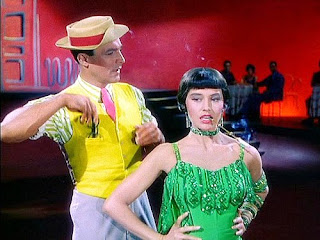
Gene Kelly plays Gabey, the sailor on a 24-hour shore leave frantically looking for his dream girl, "Miss Turnstiles" of the month, Ivy Smith (Vera-Ellen) in the film "On the Town" (1949)
Roger Scruton argued that any instance of sexual desire possesses an individualising intentionality. By this he means that sexual desire is founded upon the thought of the other as the specific individual he or she is. That is, there can be no sexual desire which exists and then ‘attaches’ itself to a specific individual. From this account it also follows that there cannot be any such sexual desire as an unfocused desire for no particular man or woman.

Vera-Ellen and Gene Kelly in "On the Town" (1949) directed by Stanley Donen & Gene Kelly
Scruton considers the case of the sailor storming ashore with the thought ‘woman’ in his mind: he might be thought to desire a woman, but no particular woman. Scruton claims that until the sailor actually meets a specific woman he desires, he desired no woman; he was rather in the condition of desiring to desire. Such a view of sexual desire has to find an adequate response to such phenomena as that of Casanova, described by Stefan Zweig: 'Sex goes through the rhythm of the year, in man and woman, ceaselessly changing - the rhythm of the sun in his relation to the earth'. -"Sexual Desire" by Christopher Hamilton - Richmond Journal of Philosophy (2004)

No mere pretender was Kelly, playing with happiness. Rather he was happy, often to the extent of appearing fully flushed. A most joyous, most happy dancing fella! A filmic Puck. A modern-day Pan. Full of dancing life force, and most contagious in his exuberance and merriment. -Pittsburgh Post Gazette (1967)

"Pal Joey" starring Frank Sinatra, Kim Novak and Rita Hayworth, directed by George Sidney in 1957, is presented on Blu-ray courtesy of Twilight Time with an AVC encoded 1080p transfer in 1.85:1.

The pluses far outweigh the negatives here, with some incredibly lushly saturated color, and excellent fine detail which brings out every nuance in the stunning Jean Louis costumes. Bonus features: Isolated score track Backstage and at Home with Kim Novak featurette Original theatrical trailer Liner notes by Julie Kirgo.

In the last week of 1952, Frank Sinatra went into Columbia’s Hollywood studio and recorded three songs in high style. Axel Stordahl arranged and conducted, and for the first time Bill Miller was sitting at the piano. The first number, Rodgers and Hart’s “I Could Write a Book,” marked a new artistic peak. This song had debuted on Broadway in 'Pal Joey' in 1940, starring Gene Kelly.

Gene Kelly and Frank Sinatra with Esther Williams in "Take Me Out to the Ball Game" (1949)
Gene Kelly was unlike anybody Sinatra had met in Hollywood. Handsome, tough, cheerful, and athletically brilliant, Kelly was a walking paradox: a blue-collar jock who happened to be a superlative dancer, the opposite of the slim, ethereally elegant Fred Astaire. Sinatra was intimidated by Kelly's sheer dancing ability. -"Frank: The Voice" by James Kaplan (2011)

Gene Kelly in "Pal Joey" on Broadway (premiered on December 25, 1940, at the Ethel Barrymore Theatre). Directed by George Abbott with choreography by Robert Alton, the opening-night cast included Gene Kelly as Joey Evans, Vivienne Segal as Vera, and June Havoc as Gladys. Van Johnson and Stanley Donen were also in the cast.

Gene Kelly and Vivienne Segal in 'Pal Joey' on Broadway - “In Our Little Den of Iniquity” number.

Joey Evans, as an unsympathetic antihero, is a striking departure from the usual musical comedy formula. Richard Rodgers said: "Joey was not disreputable because he was mean, but because he had too much imagination to behave himself, and because he was a little weak."

In Chicago in the late 1930s, Joey Evans, a second-rate dancer and nightclub MC, a charming "heel" with big plans, schemes to get his dream –his own nightclub– "Chez Joey". He meets young and naive Linda English outside a pet shop, and, impressing her with his grandiose lies, they are romantically attracted ("I Could Write a Book").

In the nightclub, the older, wealthy but bored married socialite, Vera Simpson comes in with her friends and becomes interested in Joey as the chorus girls are doing a song-and-dance number ("That Terrific Rainbow").
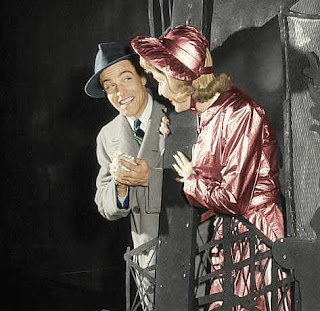
"This young man is genuinely life-saving to Pal Joey for, if the chief part were not properly cast, the new musical show might have been too merciless for comfort. Mr Kelly combines a certain amount of straightforward personal charm with the realism of his portrait so that Joey actually achieves the feat of being at once a heel and a hero". -Herald Tribune (1940)

"In terms of a Broadway man, Gene Kelly was playing a tricky role: a very brash, cocky, sure person, who was very randy with the girls, but who was needy and not well educated, which made him funny. He was an energetic, fresh, aggressive Irish-American presence, which had a great charm". -Stanley Donen

"Scratch a heel and you find Gene Kelly, who isn’t a heel at all. As Joey Evans in the new musical comedy 'Pal Joey', Gene is about the heeliest heel that ever stepped on a neck, but off-stage he’s a friendly Irish lad who started a dancing school to help pay his way through Pittsburgh University, barnstormed night clubs from New York to Dallas and made himself known to Broadway as the hoofer in William Saroyan’s 'Time of Your Life'. -The Day (1941)

Joey is thoroughly nasty – a braggart, a cheat, a wastrel who takes things as they come and is always on the lookout for ‘mice’ (young women). “Yes,” said Gene Kelly as he finished a midday breakfast, “Joey isn’t bad – he just doesn’t know the difference. He’s an ignorant, low class bum with nothing but good looks and a good line”. -New York Times (March 1941)

"There is one scene where the ingénue, Leila Ernst, comes on, and she wears a blue dress that is not as blue as her eyes. It is a bright blue, but not as bright. You know, that fascinates me. Every night I look at her eyes instead of putting myself over as I should be putting myself over all the time.” -Gene Kelly
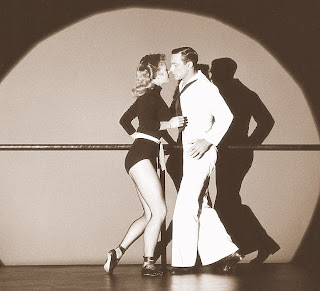
In an interview to the Los Angeles Times in 1994, Gene Kelly talked about his affinity for his leading ladies. "You must make the lady look good," he said. "If she looks good I think the dance will look good".
 Jake Gyllenhaal in New York City on March, 11, 2012
Jake Gyllenhaal in New York City on March, 11, 2012

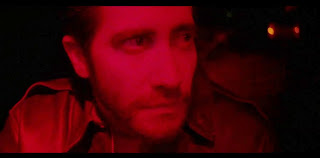
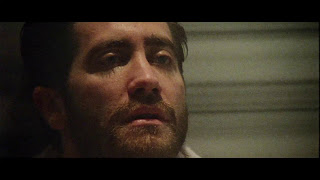
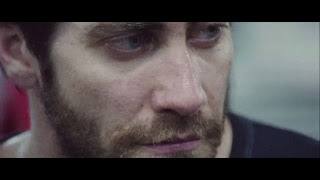

 Screencaps of Jake Gyllenhaal in The Shoes - 'Time To Dance'
Screencaps of Jake Gyllenhaal in The Shoes - 'Time To Dance'

 Jake Gyllenhaal has played a lot of roles, but you may not have seen him like this before. The actor plays a serial psycho killer in a new video by French electro-pop act, The Shoes.
Jake Gyllenhaal has played a lot of roles, but you may not have seen him like this before. The actor plays a serial psycho killer in a new video by French electro-pop act, The Shoes.





































